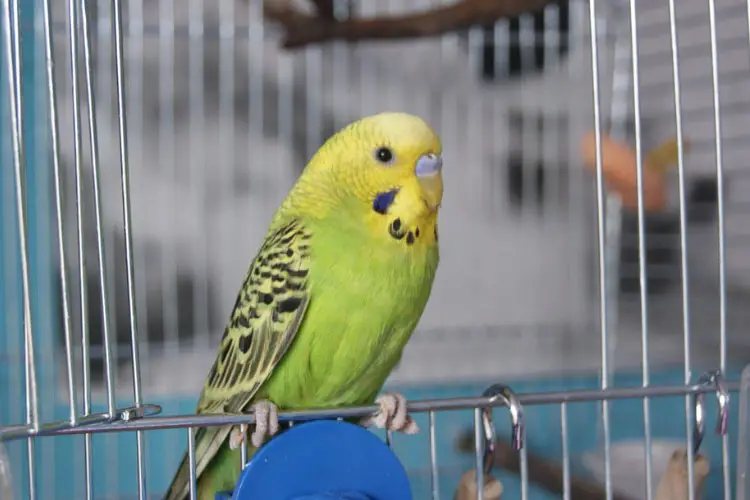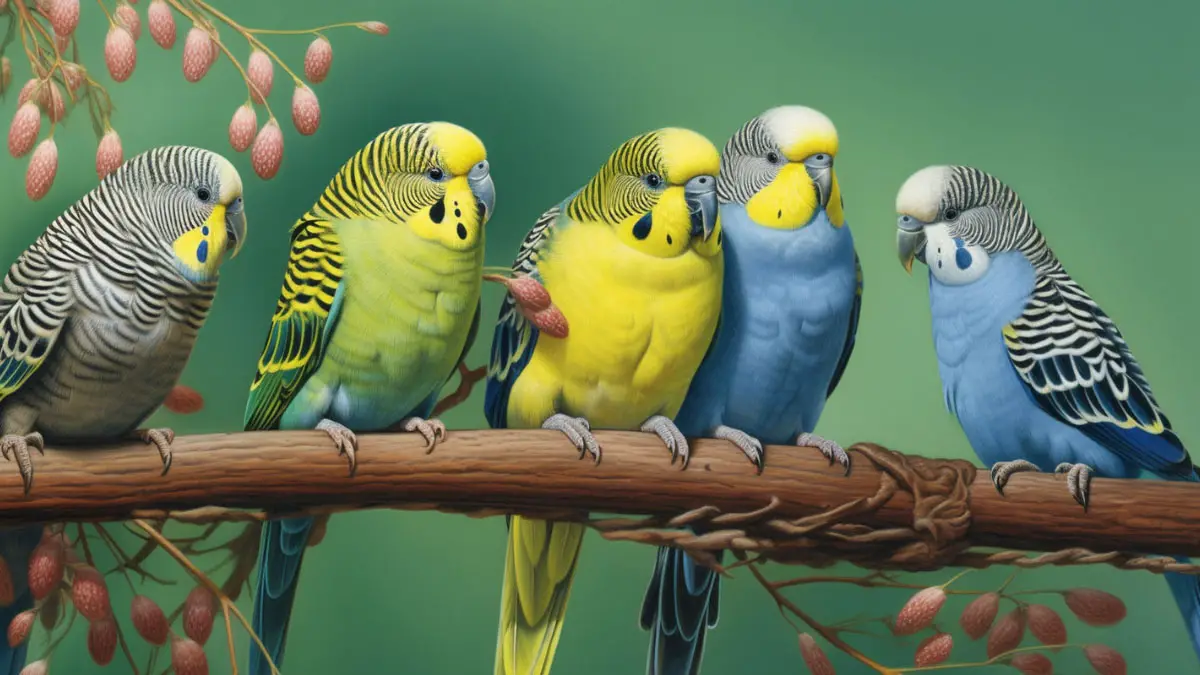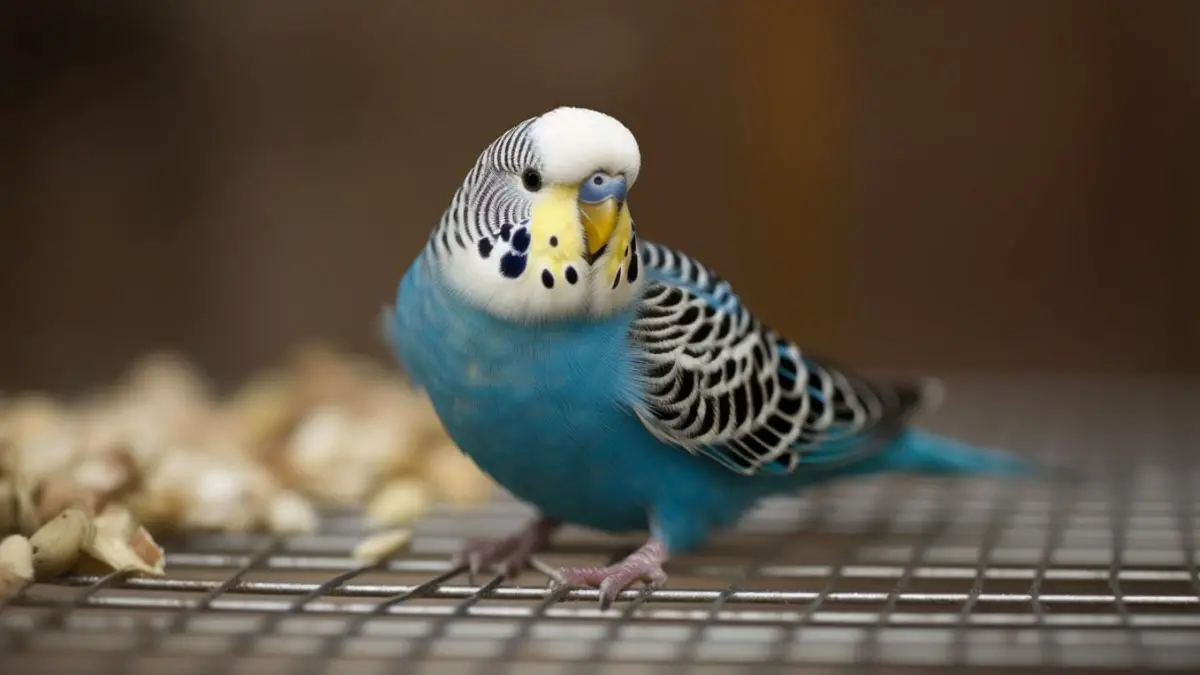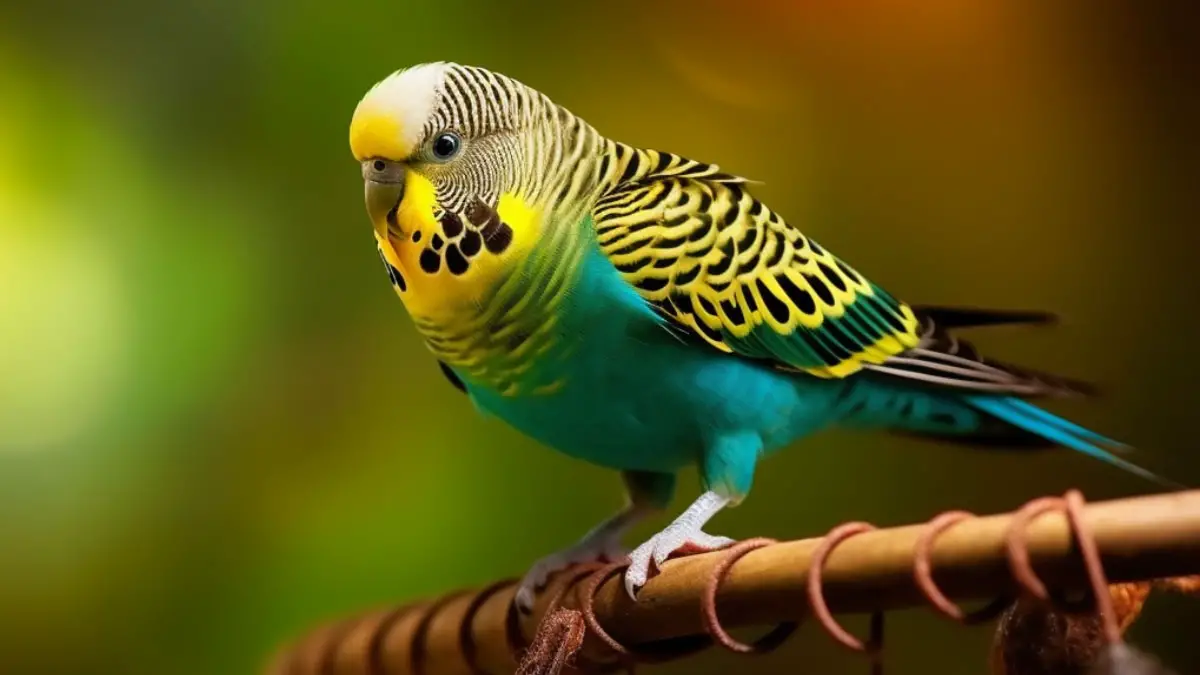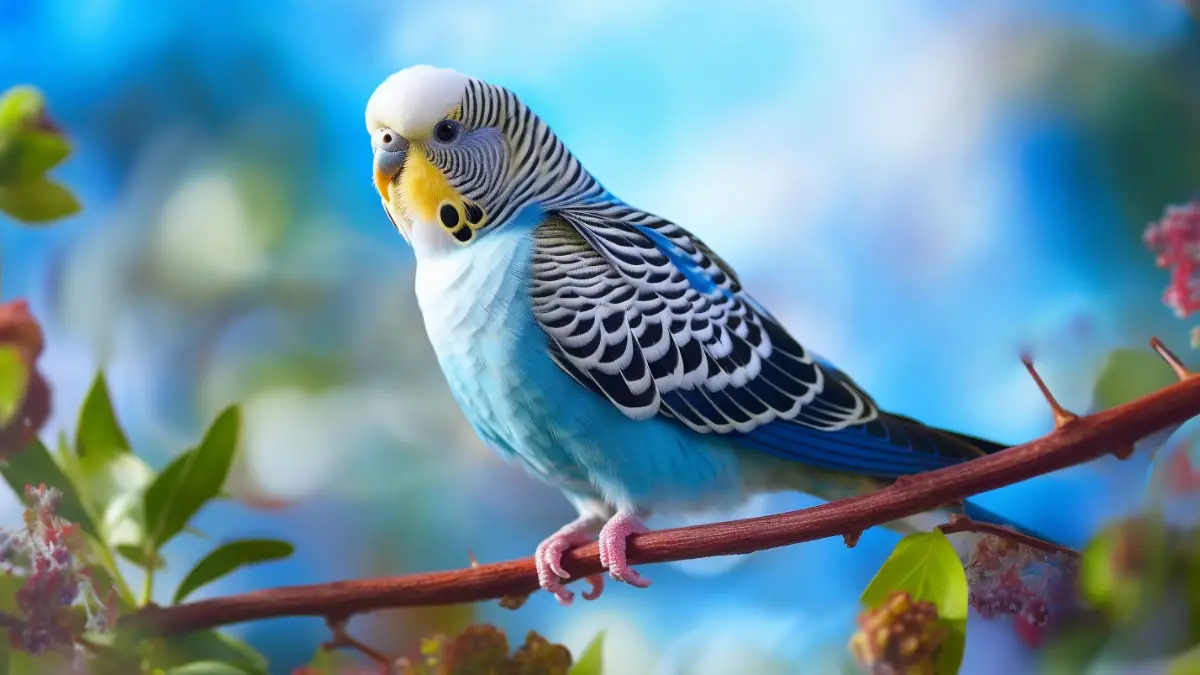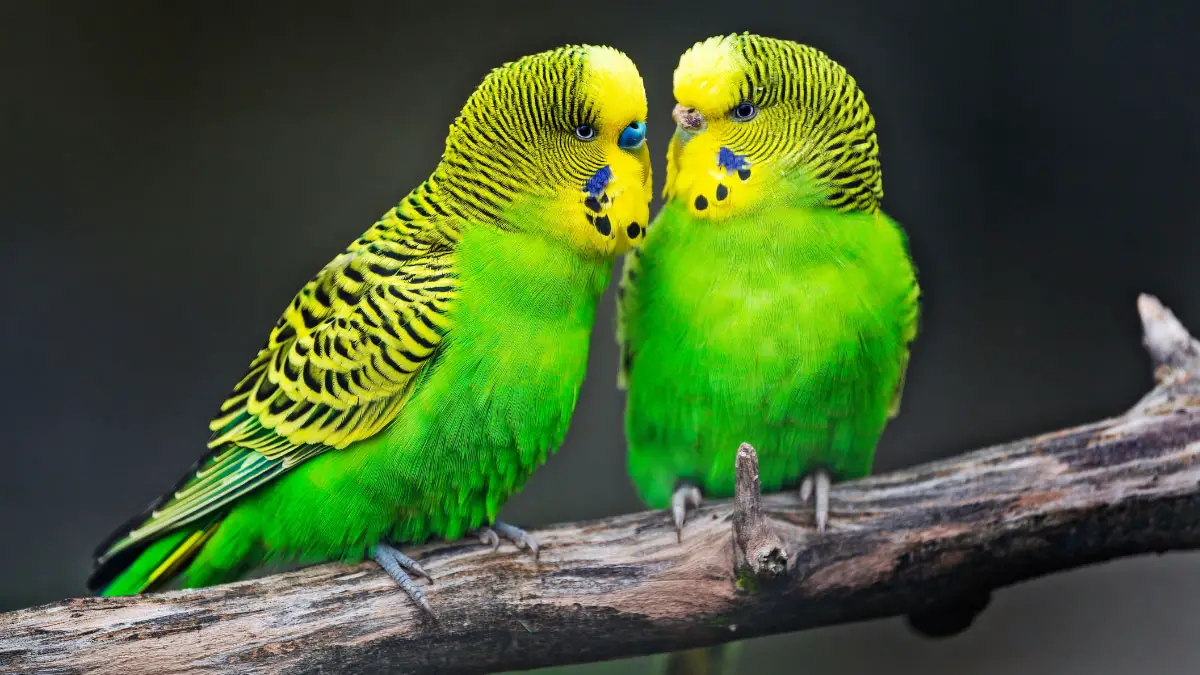Did you just spot a patch of fresh blood under your budgie’s wing? And now, you suspect that your baby or adult budgie could have a broken blood feather. However, you don’t know how to help your bird.
Well, one of the first things you must do to help a budgie bleeding under the wing is to induce clotting. Consequently, this will help stop the bleeding. But if your budgie continues to bleed, you should immediately visit an avian veterinarian for the proper treatment.
But can a budgie succumb to death from bleeding under the wing? Below, you will find answers to all the questions you might have about how to help a bleeding parakeet.
Budgie Bleeding Under Wing: How To Help?
Budgie bleeding under wings is not new because most birds have to deal with this problem in their lifetime. However, the experience can be harrowing and frightening for your parakeet. And if you fail to stop the bleeding quickly, your budgie could bleed out. Check out this tutorial on how to help a budgie bleeding under the wing.
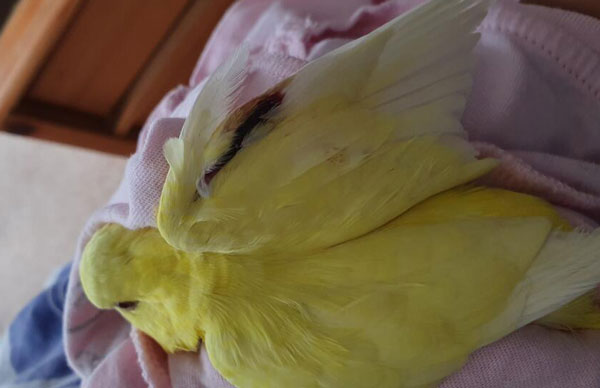
Step 1: Stop The Bleeding
You should begin by stopping the bleeding. Simply get a clean gauze or a soft cloth and place it on the wounded area under the left wing. Then, apply pressure on the site with your fingers for 10-15 minutes to induce clotting.
Step 2: Apply A Clotting Substance
If the bleeding fails to stop within 10-15 minutes, you must apply a clotting compound to the broken feather. You could use a powder-based substance made from potato starch or:
- All-purpose flour
- Cornstarch
- Ice
- Styptic powder or baking powder
- Steeped black teabag
- Antiperspirant
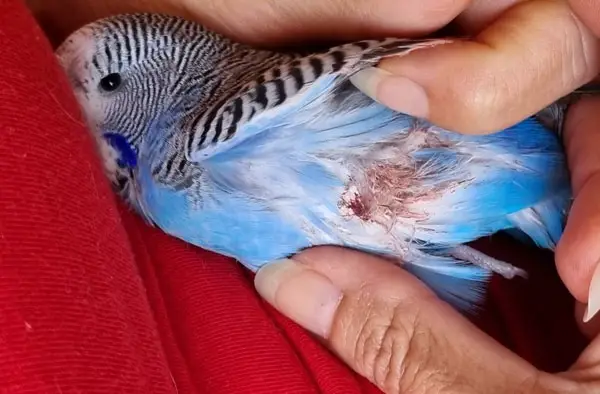
Next, place more gauze or cotton wool on the bleeding site and apply pressure for at least 10 minutes. Let your budgie rest before checking if the bleeding has stopped or slowed down after about 5 minutes.
Step 3: Visit An Avian Veterinarian
Sometimes, the bleeding may stop entirely after inducing clotting, or it may just slow down. Whichever the case, your budgie will need veterinary care.
At the clinic, the vet will safely remove the blood feather while your parakeet is under anesthesia. Consequently, this will help prevent subsequent bleeding and trauma. The vet may also administer fluid therapy to your budgie because of the blood loss.
Step 4: Recovery
After removing the blood feather, place your budgie in a quiet place lined with a clean towel and heating pad. Your bird needs to stay calm, warm, and rest as much as possible to regain its energy levels. And to ensure faster recovery, give your parakeet lots of fluids.
Why Is My Budgie Bleeding Under The Wing?
Now, you might wonder, what causes budgies to bleed under the wing? This usually happens because of a broken wing blood feather. But what is a blood feather?
Also referred to as a pin feather, this is a freshly growing feather that develops in young budgies or adult birds after feather loss.
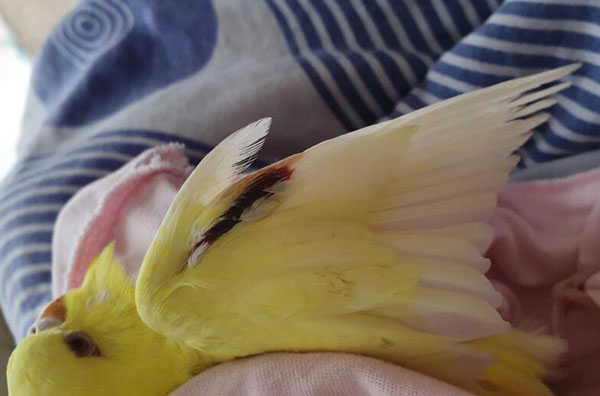
Compared to a wholly grown feather, a fresh growing feather is usually filled with blood at the feather shaft. Now, if your bird accidentally injures its wing feather, it could bleed heavily under the wing. Unfortunately, this may happen every time your budgie grows new tail feathers.
Also read: English Budgie Vs. American Budgie
Should I Remove The Bleeding Blood Feather?
No. According to different pet experts, you must never attempt to remove the bleeding feather follicle yourself. The entire process can be exceedingly painful and traumatic for your bird. As a result, this could destroy the bond you already have with your healthy bird.
In addition, while pulling the pin feather, you could rip out some sections of your bird’s skin tissue. This happens if you remove the feather incorrectly. Consequently, your budgie could suffer from internal hemorrhage or feather cyst.
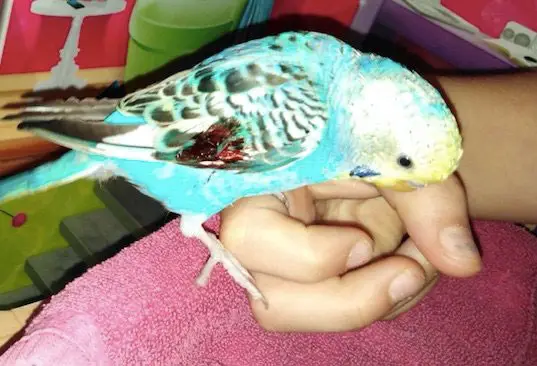
Therefore, the most humane option is to induce clotting before you get an avian vet to remove the broken blood feather. This is because a vet is better equipped and will perform the procedure under anesthesia. And if your budgie has an infection, they can treat it immediately to protect your bird from further feather bleeding.
Can a Budgie Die From Bleeding Under Wing?
Yes. You see, budgies and other birds lack adequate clotting agents in their blood. Unfortunately, even a minor cut or an injured blood feather can put your bird in a life-threatening situation if you don’t stop the bleeding immediately.
On the other hand, if the blood feather is not pulled out, your budgie may pick at it, leading to additional bleeding. Consequently, your parakeet could suffer from anemia or bleed to death.
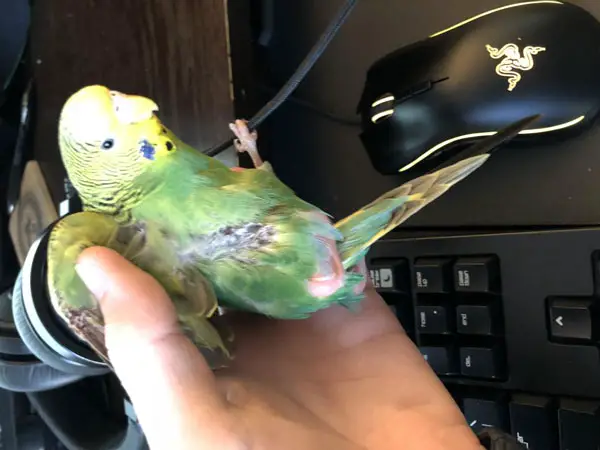
Because of this, you should visit a vet if the bleeding continues even after using a clotting substance. This is because your pet bird could lose so much blood over a short time.
Will a Bleeding Wing Feather Heal On Its Own? If Yes, After How Long?
Yes, but with a good home and veterinary care once the bleeding has ceased. This includes keeping your budgie warm to relieve stress on the injured area and reducing too much handling. As a bird owner, you must feed your pet bird well and keep it hydrated. Your parakeet should also get enough rest, preferably in a quiet and dark place.
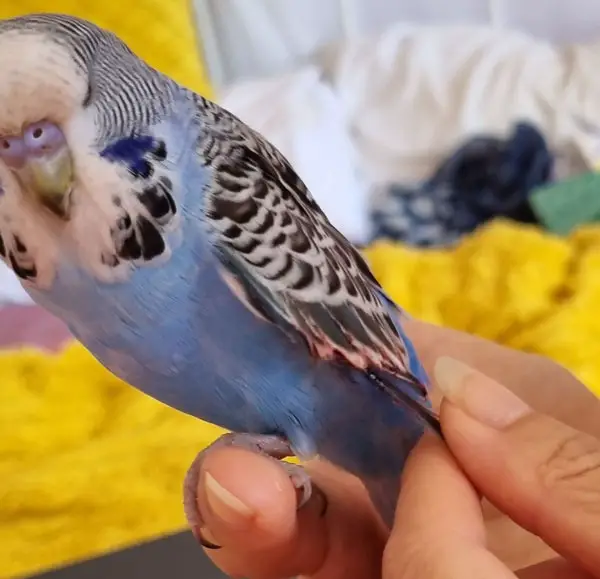
Regarding how long the healing could take, it could take 3-6 weeks, depending on the severity of the injury. For severe injuries, the recovery may take 6 weeks or more. However, for minor injuries, when your bird is in good health, the healing may take up to two weeks.
FAQs
Before we conclude, check out these commonly asked questions about how to help budgies bleeding under the left wing.
The most frequent cause is usually a broken blood feather. This usually happens among baby birds when new feathers are growing. Adult plumage birds also experience the same since feathers lost during molting have to be replaced with new ones.
Yes, in some cases. You only need to apply pressure on the bleeding area using a clean cloth or gauze. However, sometimes the bleeding may not stop. Therefore, you must use a clotting agent like styptic powder, corn starch, or flour to prevent further blood loss.
If the bleeding is nothing major, your bird could recover entirely in only two weeks once accorded the proper veterinary care. But if your budgie bleeds out a lot, the healing may take longer, between 3 and 6 weeks.
Related: Can Budgies Eat Mango?
Outro
Seeing your budgie bleeding under the wing can be scary. This usually happens because of an injured feather. Nothing to worry about, though, because all you’ve got to do is to stop the bleeding. This is because parakeets can easily bleed to death or suffer from life-threatening conditions like internal or external hemorrhage.
However, you must never pull out the injured feather because it can be painful for your budgie. Instead, you should have an avian vet treat your pet bird immediately after stopping the bleeding. And within a couple of weeks, your parakeet will have recovered fully.
